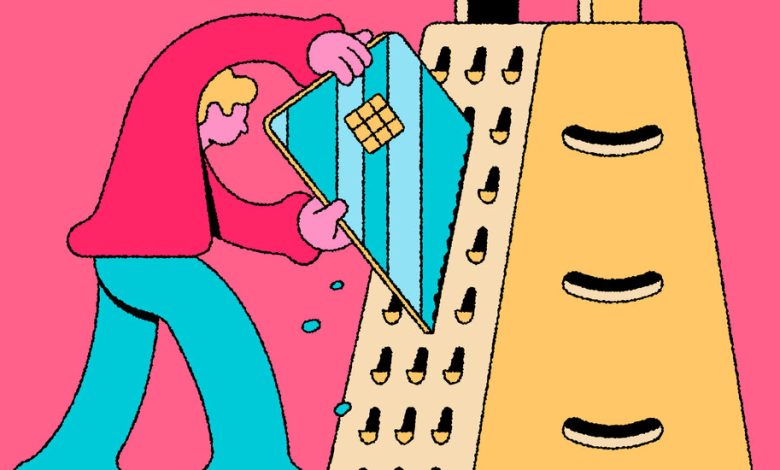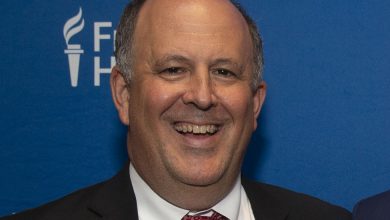Lugging Credit Card Debt Into 2024? Now’s the Time to Make a Plan

As 2024 dawns, Americans’ credit card debt and late payments are rising, and card interest rates remain high, but many people lack a plan to pay down their debt. If your balances are ballooning, a New Year’s resolution to tackle them would be timely.
After clearing the $1 trillion mark last spring, credit card debt has continued to mount, rising 4.7 percent in the third quarter to $1.08 trillion, the Federal Reserve Bank of New York reported.
Card debt fell during the pandemic period of 2020-21 but rose as Americans turned to credit to cover expenses amid rising prices. Card debt is growing even as inflation cools and the job market remains resilient.
Delinquencies are also on the rise. Two percent of card users went from being current on payments in the second quarter of 2023 to being 30 or more days late in the third quarter, up from 1.7 percent in the first half of the year. Borrowers who also had car loans and student loans, in particular, were more likely to fall behind on their credit card payments, Fed researchers reported.
Despite rising debt, fewer than half of cardholders who carry a balance say they have a plan for paying it off, according to a survey published this week by the financial site Bankrate. Nearly half those surveyed said they carried a balance, up from 39 percent in 2021. That’s worrying, analysts say, because the Fed reported that the average interest rate was above 22 percent for cards that assessed interest.
“I think it’s a big concern,” said Ted Rossman, senior industry analyst at Bankrate. At 22 percent, it would take almost nine years to pay off a $2,000 card balance by making minimum monthly payments, and total interest would exceed $2,100, Mr. Rossman said.
Making larger monthly payments will pay off debt faster, but getting people to do that in a way that makes a meaningful difference is a challenge, according to a recently published paper about an experiment in Britain. In the test, thousands of people opening card accounts were encouraged to sign up to automatically pay more than the minimum amount each month — and most did so. But the change made no difference in their debt in the longer term, researchers found, in part because people kept spending on their cards, so their payments were still too low to chip away at the growing balances.
Paying down card debt is “a really hard thing to do,” said Benedict Guttman-Kenney, a doctoral candidate in economics at the University of Chicago and the lead author of the paper. “There’s no simple fix.”
Isabel Patterson, 36, an account manager at a sports marketing agency in Richmond, Va., said she had spent roughly the last three years paying off about $20,000 in credit card debt.
Ms. Patterson began accumulating debt after opening her first credit card account in her early 20s, she said. “I didn’t understand how interest works,” she said. “I was making minimum payments but was still using the card, so it didn’t make a dent.”
One of Ms. Patterson’s splurges was a $2,500 bicycle. But during a spell of unemployment, she also had to pay for living expenses with credit. “It added up after a while,” she said.
Her parents suggested she contact Money Management International, a nonprofit agency that negotiates payment plans for eligible borrowers at a reduced interest rate. Participants make a single monthly payment to the agency, which pays the lenders. (The initial consultation is free, and clients pay a monthly fee of $24, on average, for the debt management plan, said Thomas Nitzsche, a spokesman for the agency; the average negotiated interest rate is 7 percent.)
Ms. Patterson said she cut back on travel and new clothes, shopped at cheaper stores like the Aldi supermarket and ignored ubiquitous social media promotions for beauty products. She expects to make a final debt payment of $717 next month, and plans to use some of the newly available cash to build savings for unexpected expenses.
Money Management International continued to see an influx of new clients during November and December last year, normally a slower period, Mr. Nitzsche said. Inflation has eased, he said, but card rates remain high and student loan repayment is “putting a pinch on a lot of people.” The average unsecured debt held by the agency’s clients has increased to about $30,000 from roughly $20,000 two years ago, Mr. Nitzsche said; the average balance placed in debt management plans is $18,000.
Mindy Neira, a financial planner in Westwood, N.J., recommended that if you were having trouble managing card debt, take stock of your spending. “The first step is to look — without judgment — at where your money is going,” she said, including housing, food, entertainment, travel and loan payments.
Then set a target for each category. (Ms. Neira said she preferred setting targets to making a strict budget, to account for monthly variations.) Ask: “Can I shift things around? Can I spend an extra $25 a month to pay down the debt?” Realize that if you took years to build your card balance, it will also take time to pay it off — so set realistic expectations.
If you are carrying balances on multiple cards, that’s a signal that you are spending beyond your means, said Rob Williams, managing director of financial planning at Charles Schwab. He advised paying off the card with the highest interest rate first by making more than the minimum payment. (This is sometimes called the “avalanche” method: While paying off that card, you make minimum payments on the others. After the first one is paid off, start paying more than the minimum on the card with the next highest rate, and so on.)
To avoid building up debt again once you’ve paid it off, try using a waiting period when shopping online, said Luis Rosa, a financial planner in Las Vegas. Put the item in the digital shopping cart, he said, but hold off paying for 24 hours. “Maybe you’ll decide you don’t need the item,” he said.
Another suggestion: Use two separate checking accounts, said Alvin Carlos, a financial planner in Washington, D.C. Use one for fixed essentials like your rent, mortgage or loan payments. Then decide how much you can afford for fun, like dining out and shopping, and transfer that amount to the second account each month. That way, Mr. Carlos said, you don’t have to stop and think about each purchase. Check your balance weekly, and when it approaches zero, you’re done spending until next month. (Ask your bank to make sure there are no extra fees for a second spending account.)
Here are some questions and answers about managing credit card debt:
What are some other options for paying down card debt?
Consider transferring your balance to a new credit card offering an introductory zero percent interest rate, Mr. Rossman said. Zero-percent offers are available for as long as 21 months; you typically must have a credit score of 670 or higher to qualify. There is usually a fee, such as 3 percent of the balance transferred. Don’t make any new purchases on the new card until the transferred balance is paid in full, Mr. Rossman said.
How can I find a reputable credit counseling agency?
The Justice Department offers an online directory of agencies approved to provide pre-bankruptcy counseling, and they often offer credit counseling and debt-management plans as well. You can also search online at the National Foundation for Credit Counseling.
How can I create an emergency fund?
Tax time is coming up, and if you are expecting a refund, that’s a good way to pay off card debt — or to start an emergency savings account so you can avoid using cards for unexpected expenses like car or home repairs, Mr. Rosa said. Also, more employers are offering help funding rainy day savings, so ask your benefits office what’s available.





